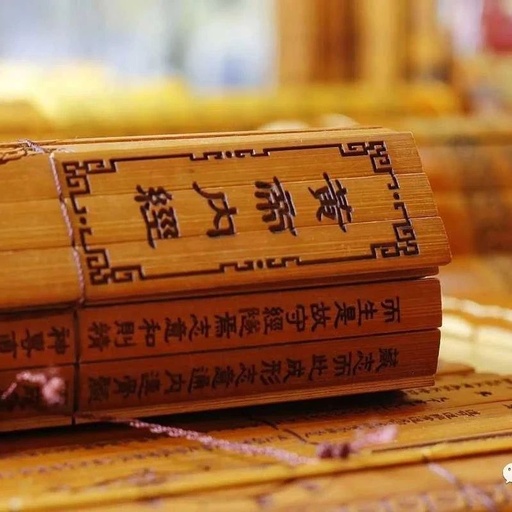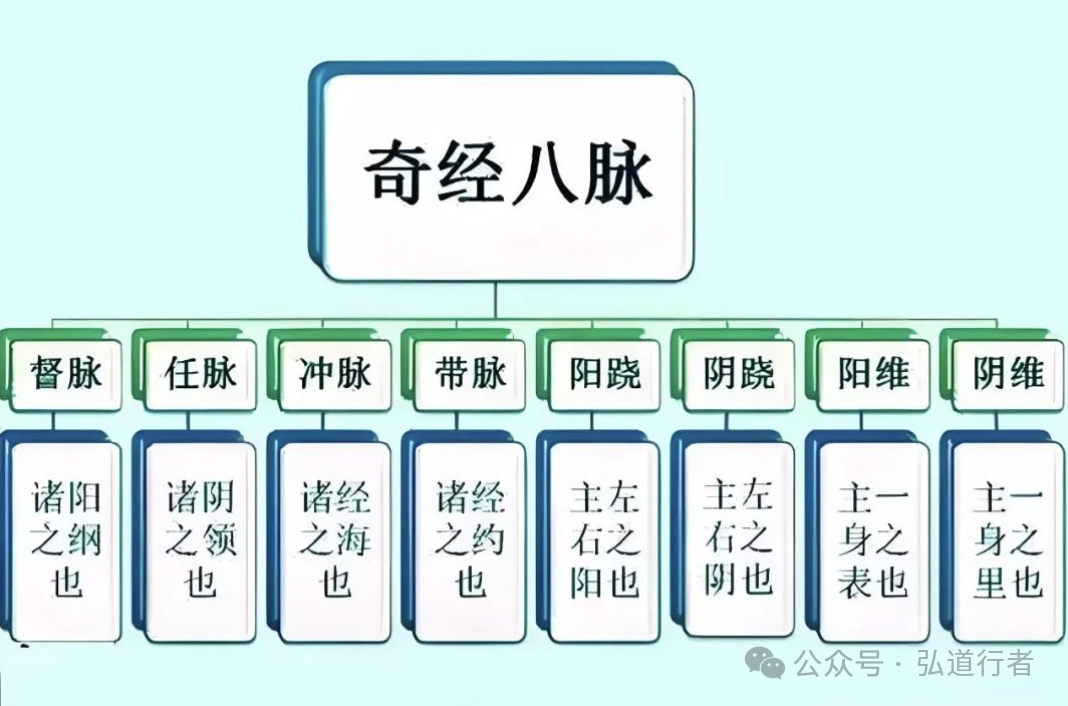
The Chong Mai (冲脉), as a key component of the Traditional Chinese Medicine (TCM) meridian system, is one of the Eight Extraordinary Meridians and is renowned as the “sea of the twelve meridians” and the “repository of blood.” It is one of the main pathways for the circulation of Qi and blood within the body. It runs from the head to the feet, covering the entire body, closely connecting with the internal organs while communicating with the external limbs and bones, playing a crucial role in reproductive function, Qi and blood balance, and the maintenance of life activities. The trajectory of the Chong Mai is described in ancient TCM texts as complex, weaving through the body and intertwining with multiple meridians, forming a complex network that serves as one of the core mechanisms for regulating Qi and blood.
According to ancient medical texts such as the Huangdi Neijing (黄帝内经) and the Nanjing (难经), combined with modern TCM theoretical understanding, the circulation pattern of the Chong Mai can be divided into a main pathway and branch network. This circulation pattern profoundly reflects the TCM philosophy of “the unity of heaven and man” and the “holistic view,” with the main and branch pathways together constructing a comprehensive, multi-layered network for the circulation of Qi and blood.
A deep understanding and application of the Chong Mai’s regulation principles can effectively treat gynecological diseases and digestive system disorders, while harmonizing Qi and blood to achieve the health management goal advocated by TCM: “prevention first, combining prevention and treatment.” In TCM clinical practice and daily health maintenance, the Chong Mai remains a core element for harmonizing Yin and Yang, strengthening the foundation, and enhancing physical constitution.
The classic literature Suwen (素问) praises the Chong Mai as the “sea that nourishes the five organs and six bowels,” while the Zhenjiu Jiayi Jing (针灸甲乙经) details the interaction between the Chong Mai and the Kidney Meridian (肾经) and Ren Meridian (任脉), further enriching our understanding of the physiological functions of the Chong Mai.
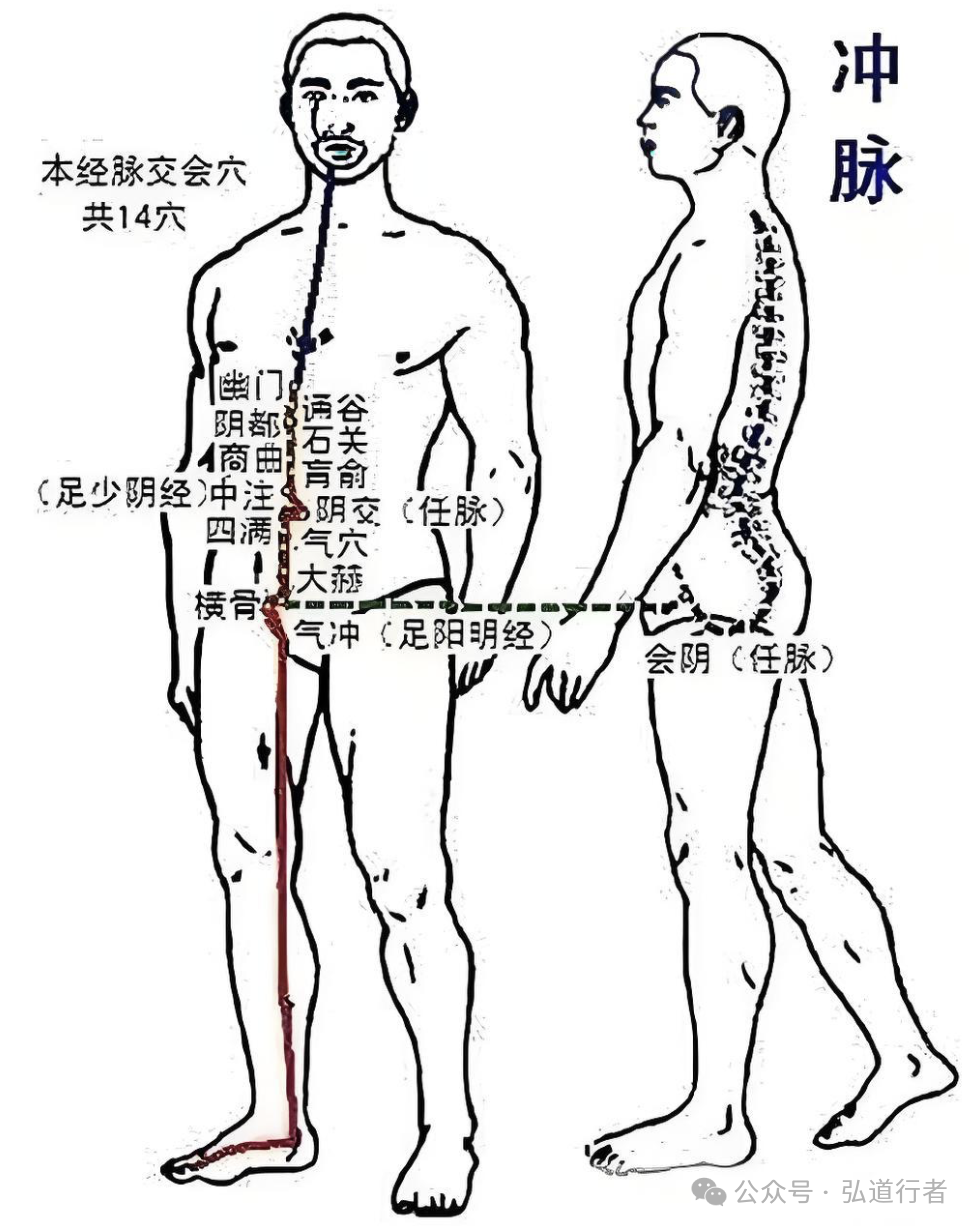
1. Overview of the Chong Mai’s Circulation Path
The Chong Mai originates from the Bao Zhong (胞中) (the core area of the lower jiao, corresponding to the uterus in females and the seminal chamber in males, sharing the same origin point with the Ren and Du meridians), serving as the “central station” for the regulation of Qi and blood in the body.
Main Circulation Path:
- Descends from the Bao Zhong, traverses the perineum point (会阴穴), along the inner front edge of the lower limbs, parallel to the Foot Shaoyin Kidney Meridian (足少阴肾经), reaching the foot area (near the Yongquan (涌泉) point).
- In the abdomen, the Chong Mai closely connects with the Kidney Meridian, ascending along the front side of the spine, forming the “Fu Chong Mai” (伏冲之脉), communicating with the Du Meridian, and ascending to the brain, becoming a bridge for the circulation of Qi and blood.
- Another branch emerges from the Qichong (气冲) point (inguinal area), ascending along both sides of the abdomen, spreading through the chest, encircling the lips, and reaching the lower part of the eye socket (near the Chengqi (承泣) point), intersecting with the Ren Meridian and the Stomach Meridian (胃经).
Branch Circulation:
- Ascending Branch: Emerges from the Bao Zhong, ascends deep along the spine, passing through the back of the head to the Fengfu (风府) point, entering the brain, connecting with the brain marrow and spinal cord, influencing consciousness and innate essence.
- Superficial Branch: Emerges from the Qichong point, ascends through the abdomen to the chest, continues to the throat, encircles the lips, and ultimately reaches the lower part of the eye socket, related to respiration, digestion, and facial Qi and blood.
- Descending Branch: Runs along the inner side of the lower limbs parallel to the Kidney Meridian, penetrating the foot, nourishing the lower limbs, and regulating reproductive function.
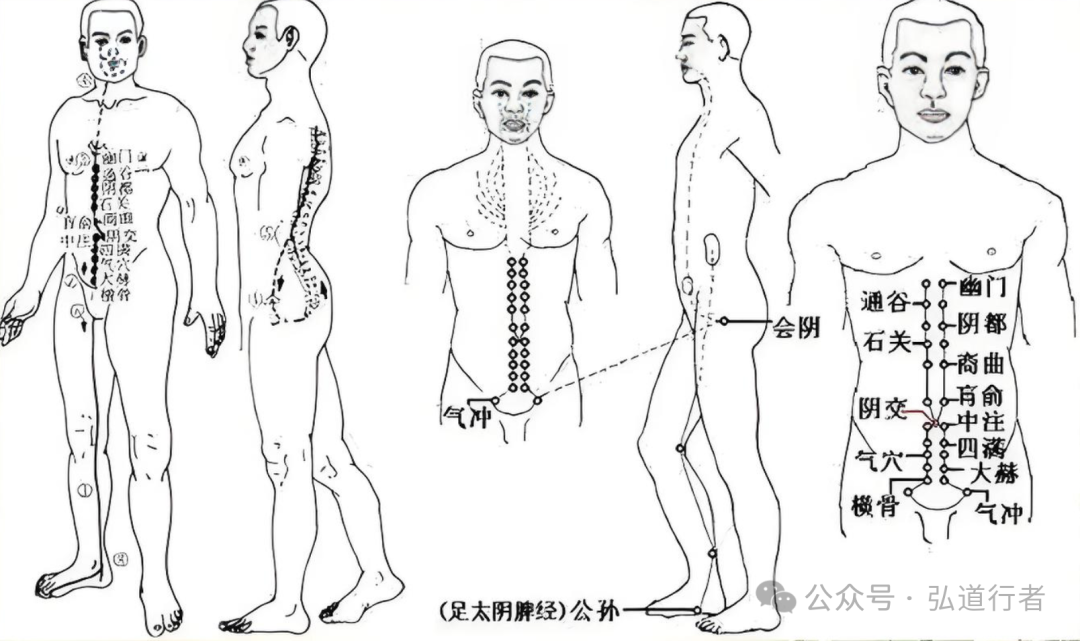
2. The Interactive Network of the Chong Mai with Other Meridians
The Chong Mai constructs a complex network for the distribution of Qi and blood through its intersections with multiple meridians:
- Intersects with the Ren Meridian at the perineum and Yin Jiao points (阴交穴).
- Connects with the Du Meridian through the “Fu Chong Mai”.
- Overlaps with the Foot Shaoyin Kidney Meridian at multiple points in the abdomen.
- Intersects with the Foot Yangming Stomach Meridian at the Qichong point, nourished by the Stomach Meridian.
3. Unique Aspects of the Chong Mai’s Circulation
- Connecting the Three Jiao: The “main road” for the circulation of Qi and blood throughout the body.
- One Source, Three Divergences: Shares the same source with the Ren and Du meridians, collaboratively regulating essence and Qi and blood.
- Sea of Blood Meridian: Gathers Qi and blood, closely related to women’s menstruation and men’s seminal blood.
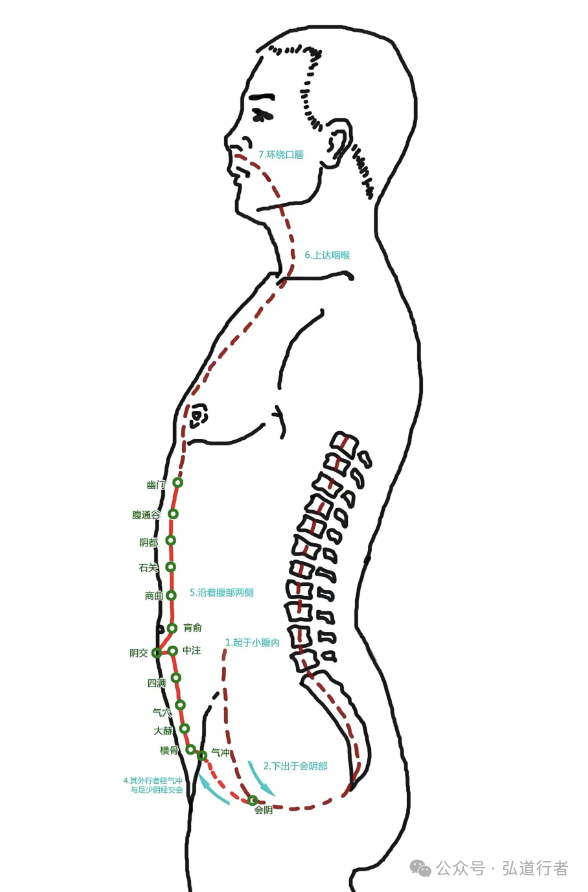
4. Key Acupoints of the Chong Mai
Although the Chong Mai does not have exclusive acupoints, it intersects with multiple meridians to form important nodes:
- Ren Meridian: Perineum, Yin Jiao.
- Kidney Meridian: 11 points including Guanyuan (横骨) and Da He (大赫).
- Stomach Meridian: Qichong.
- Spleen Meridian: Gongsun (公孙) (communicating with the Chong Mai).
Functions of Key Acupoints:
- Yin Jiao Point: Harmonizes the Chong and Ren, improves gynecological issues.
- Qichong Point: Regulates reproductive Qi and blood, treats menstrual and reproductive disorders.
- Gongsun Point: Opens the Chong Mai, regulates the spleen and stomach, alleviates abdominal pain.
5. Physiological Functions and Effects of the Chong Mai
- Regulates Qi and Blood: Accumulates and releases Qi and blood, maintains balance among the twelve meridians, primarily governing reproduction, menstruation, and the rise and fall of Qi.
- Reproductive Health: Directly affects women’s menstruation, pregnancy, and men’s reproductive health.
- Coordination of Organs: The ascending branch maintains the heart and lungs, while the descending branch influences the liver and kidneys, working with the Ren and Du to maintain Qi balance.
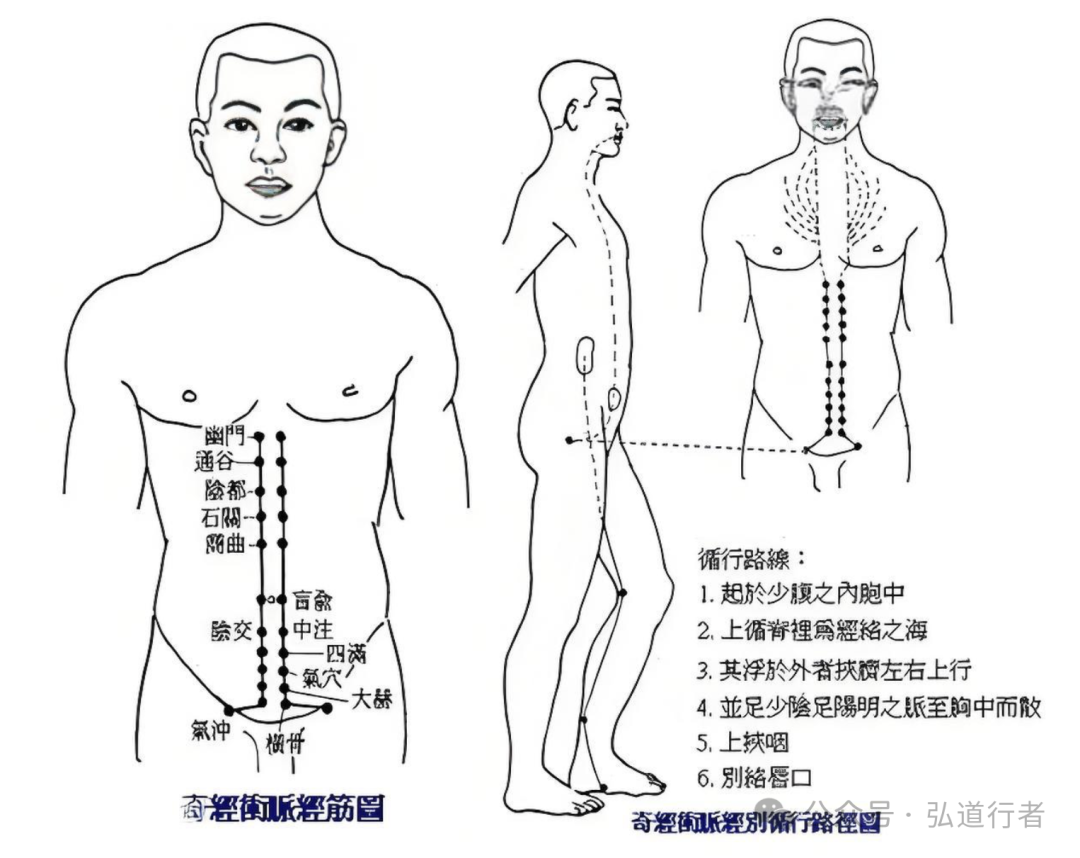
6. Symptoms and Regulation of Chong Mai Obstruction
Common Symptoms:
- Reversed flow of the ascending branch: headaches, dizziness, nausea.
- Deficiency of the descending branch: scanty menstruation, cold lower limbs, infertility.
- Stagnation of the superficial branch: chest and rib fullness, breast hyperplasia, insufficient facial Qi and blood.
- Gynecological issues: irregular menstruation, dysmenorrhea, etc.
- Digestive system symptoms: abdominal pain, diarrhea, etc.
- Qi disorder: Qi counterflow, belching, etc.
Regulation Methods:
- TCM Treatment: Acupuncture and moxibustion at acupoints related to the Chong Mai, such as Qichong and Xuehai (血海).
- Health Maintenance: Combine exercises (Tai Chi, yoga), massage, and moxibustion with TCM health practices to enhance physical constitution and harmonize Qi and blood.
- Yoga Poses: Camel pose, Bow pose, etc., which help maintain the smooth flow of the Chong Mai.
— The End — The path to health lies in persistence. Please save and share this with your family and friends, and let’s take action together!
The path to health lies in persistence. Please save and share this with your family and friends, and let’s take action together!⊙Note: The content of this article is sourced from the internet. It is intended to popularize TCM knowledge and should not be used as a prescription. Please consult a doctor if needed.。

